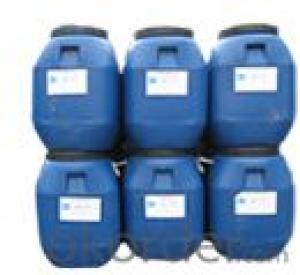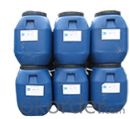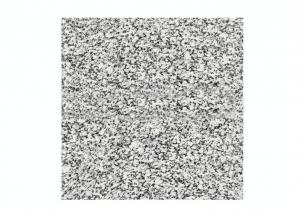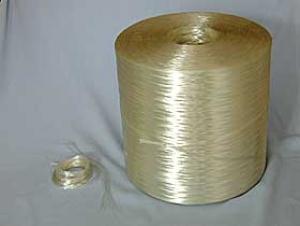High strength pourable epoxy resin grout(MH-EP)
- Loading Port:
- China Main Port
- Payment Terms:
- TT OR LC
- Min Order Qty:
- -
- Supply Capability:
- -
OKorder Service Pledge
OKorder Financial Service
You Might Also Like
High strength pourable epoxy resin grout(EP)
Description
EP is a three-component pourable grout, based on a solvent free epoxy resin and selected aggregates. EP cures to form a hardened mortar with excellent adhesion to many substrates. This combined with the product’s ease of application makes it ideally suited to site application.
Uses
It is mainly applied for repairing of concrete substrate which includes 1-15mm uneven surface and 15-100mm deep hole.
As a self smoothening mortar: Repairing and patching horizontal surfaces.
Advantages
High early strength
High tensile and flexural strength, vibration resistant.
Unaffected by wide range of chemicals
Storage and Shelf life
Minimum shelf life is 1 year. Store under controlled conditions in original containers from 5 – 35 ℃.
Instructions for Use
1. Surface Preparation
Mechanically roughened, free from all contaminants (Eg. Dust, oil, grease, ice, etc.), surface water, laitance, old form oil, curing membrane and old coatings. Suitable methods of preparation include blast cleaning and scrabbling (sanding/grinding on fibrous cement). All dirt must be removed from bolt by air blasting.
2. Primer Application
Apply #3 Epoxy resin primer tack coat application method for substrate surface treatment. Apply by brush, roller or squeegee and scrub well into substrate. When maximum waiting times are expected to be exceeded lightly broadcast with kiln dried quartz sand (0.4 – 0.7 mm) at a maximum of 1.0 kg/m2. Remove excess before application of second coat.
Second coating layer # 5 Epoxy resin primer should be applied ( while the substrate exposed in the air. Therefore, the first layer should be brushed carefully. When the second coating applied after more than 48 hours, broadcast with dried quartz sand (0.4 – 0.7 mm) at a maximum of 0.8kg/m2. Attentions should be taken to avoid excessive quartz sand in the primer.
3. Mixing
EP is supplied in factory proportioned units comprising the correct quantities of Part A (resin), Part B (Hardener) and Part C (Aggregate). Thoroughly stir Parts A and B separately using a slow running drill stirrer with a spiral mixer. Decant all the Part B into Part A and mix thoroughly together until a uniform mix is achieved (typically 2 minutes). Continue to mix whilst adding Part C slowly. Ensure the attainment of an even color and an even distribution of aggregate throughout the mix.
Reduce quantity of component C if high material flowable required; Regulate proportion of component A and component B if application should be extended. For example, regulate the mixing proportion of component A to component B in 6: 1 instead of 5: 1. The actual mixing proportion should be confirmed by the test at site.
4. Thickness
Generally, suitable thickness depends on clearance, distance of flow, ambient and substrate temperatures and pour size. Maximum thickness in each pour is 50mm.
5. Curing
Being an epoxy, no special curing techniques are required. Curing time will depend on the quantity and the ambient temperature. High volumes and high temperatures result in short curing times. Do not install equipment or load the epoxy before full cure.
6. Cleaning
Uncured material may be cleaned from application tools, etc. Using MUHU-cleaner (flammable solvent). Cured material can only be removed mechanically.
Technical and Physical Data
Form: Repair mortar
Density: ≥2.0kg/liter
Volume solids: 100% (solvent free)
Mix ratio: A: B: C = 5: 1: 25-30 (by weight)
Compressive strength:
1-15mm epoxy resin repair mortar | 15-100mm epoxy resin repair mortar | |||
Compressive strength | 1 day | Approx. 50MPa. | 1 day | Approx. 60 |
7 days | Approx. 90MPa. | 7 days | Approx. 100MPa | |
Adhesiveness | 20℃ | approx. 4 MPa (Concrete mixing failure) | ||
Application temperature | 5 – 35℃ (substrate and ambient temperatures) | |||
Color: Part A – Transparent (water white), Part B – Transparent (straw)
Part C – White sand
Straw when mixed.
Packaging: 50kg.
Potlife: 30 minutes (at 25℃)
Important Notes:
Do not apply EP to surfaces with standing water.
Only mix as much as can be applied within the stated potlife.
Do not dilute the product with solvent as this will affect both the cure and in-service performance.
Handling Precautions
Avoid contact with the skin, eyes and avoid breathing it’s vapor.
Wear protective gloves when mixing or using.
If poisoning occurs, contact a doctor or Poisons Information Centre.
If swallowed, do NOT induce vomiting. Give a glass of water.
If skin contact occurs, remove contaminated clothing and wash skin thoroughly.
If in eyes, hold eyes open, flood with water for at least 15 minutes and see a doctor.
Note:
The information, in particular, the recommendations relating to the application and end-use of products. In practice, the differences in materials, substrates and actual site conditions are such that no warranty in respect of merchantability or of fitness for a particular purpose, nor any liability arising out of any legal relationship whatsoever, can be inferred either from this information, or from any written recommendations, or prietary rights of third parties must be observed.
- Q: 1 square mull retaining wall is equal to how many square stone
- Need to block 1.02 square bar, plus loss, budget fixed injury is the case
- Q: M15 in the building that the strength of mortar? What is the unit?
- The mortar strength grade is determined by the compressive strength values maintained at 28 d under the standard conditions [at (20 ± 2) ° C and relative humidity of 90% or more) using cubic cubes with a side length of 7
- Q: Glass beads insulation mortar need to do test pieces or raw materials re-examination?
- Yes, the raw material testing, with the conditions of the test block should be, with the conditions of 300x300x30 do lead to each other, Strength, thermal conductivity.
- Q: Some people know what is barium cement mortar, the price is how much, where there is provided ??
- After the construction of the best barium sulfate powder coated wall as a double protection of radiation, professional barium coated with the role of radiation, the general medical mainly used in radiology The price is about 800 yuan
- Q: Building floor moisture, please tell me about the building floor moisture, mainly want to understand the capillary phenomenon of building materials and prevention.
- 060 elevation to do 20 thick cement waterproof mortar moisture barrier, when there is a concrete ring beam or connecting beam , Do not do the level of moisture-proof layer When the walls on both sides of the indoor floor is not equal, should be in the side of the filling as a vertical moisture-proof layer (with the former) and connect the two levels of moisture
- Q: Promise insulation mortar and hollow glass beads non-polar insulation mortar What is the difference
- This is only the glass beads particles, then the inorganic insulation mortar is made of glass beads and each other with the powder plus powder Together with the name, but now as long as the use of glass beads material insulation materials we all refer to are inorganic insulation mortar, my buckle is what you do not understand you can add me to learn more
- Q: What is good for roof waterproofing? Coil or waterproof paint ah?
- Roof waterproofing can not use a single waterproof material, must be rigid and flexible combination of construction 1. The first layer of flexible waterproof, such as waterproof coating. 2. The second time to do mortar waterproof, as a copy of the Dan Dan light chi chi corpse built a layer of protective layer. Flexible waterproof tensile elongation, a little bit of settlement or deformation will not damage the waterproof layer. Rigid waterproof (ie mortar waterproofing agent) waterproof at the same time, can play a protective role, waterproof layer is not easy to be destroyed. If the roof area is not particularly large, it is recommended to use waterproof coating (must choose flexible), good waterproof coating waterproof life than the long, and some environmental protection. Above do mortar waterproof as a protection. If you want to buy the coil, then, in particular, pay attention to the market a lot of waste plastic is made, the water cycle is even shorter. , Note: Be sure to buy regular manufacturers of regular products. And to standard construction.
- Q: 1: 8 cement ceramic particles to find how to set the amount of slope set
- 1: 8 cement ceramic particles to find slope layer, according to the amount of 1: 8 cement vermiculite with the amount of vermiculite in the calculation (that is, each cubic 1: 8 cement ceramsite, cement 0.175t, ceramic 1.02 cubic). 1: 8 cement ceramsite to find slope layer cover roof insulation layer quota, and then adjust the material spread, or the preparation of supplementary quotas.
- Q: What is the difference between a waterproofing agent and a waterproof coating?
- Waterproof coating is directly used for the construction of waterproof layer of waterproof slurry, such as the dragon one-component polyurethane waterproof coating directly open cans to form a waterproof layer; waterproof agent is the main field of tattoo fool algae add each other to the concrete, Cement mortar and other materials which increase its waterproof performance of a waterproof additive.
- Q: Now what is the general use of indoor plaster material? Please advise, thank you
- General plaster general plaster used by the material are lime mortar, cement mortar, cement mortar, polymer cement mortar, knife knife ash, paper lime, plaster gypsum, etc
Send your message to us
High strength pourable epoxy resin grout(MH-EP)
- Loading Port:
- China Main Port
- Payment Terms:
- TT OR LC
- Min Order Qty:
- -
- Supply Capability:
- -
OKorder Service Pledge
OKorder Financial Service
Similar products
Hot products
Hot Searches
Related keywords














